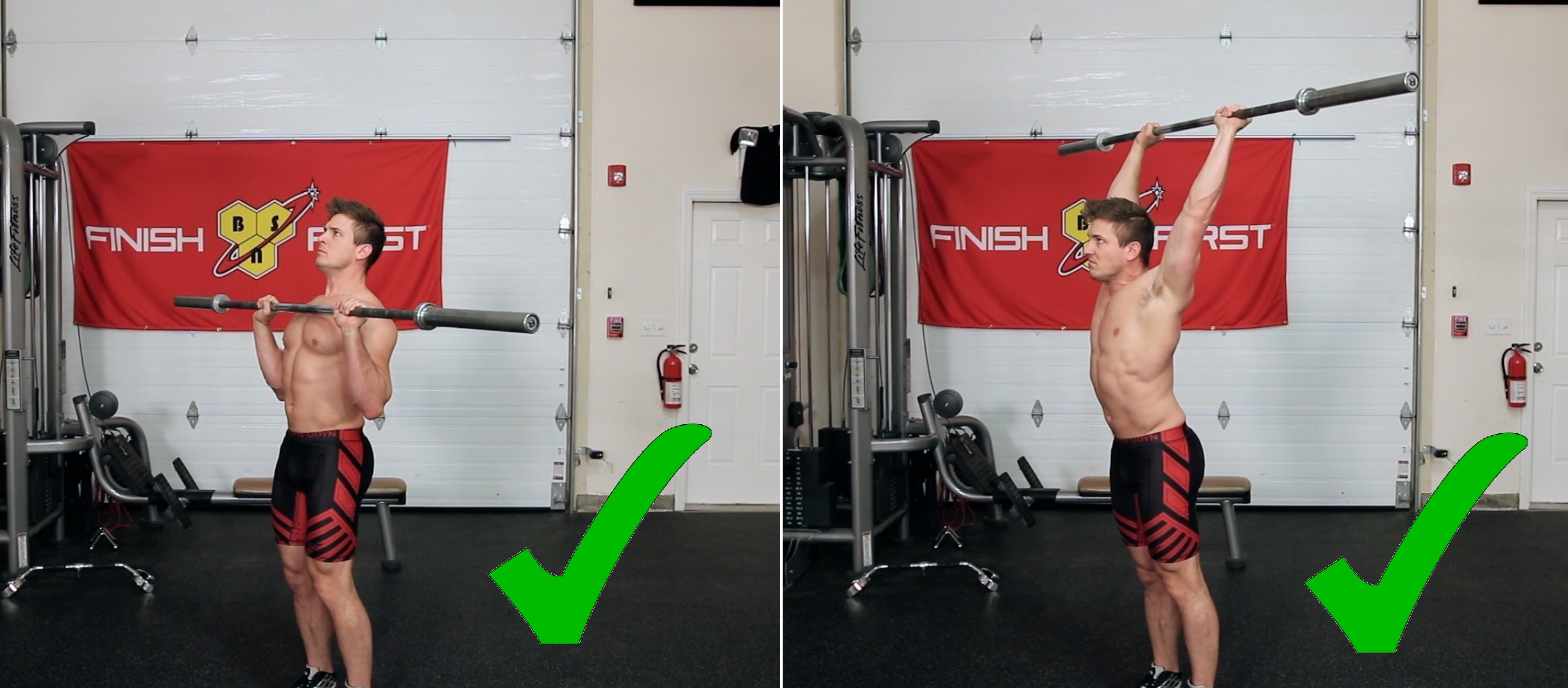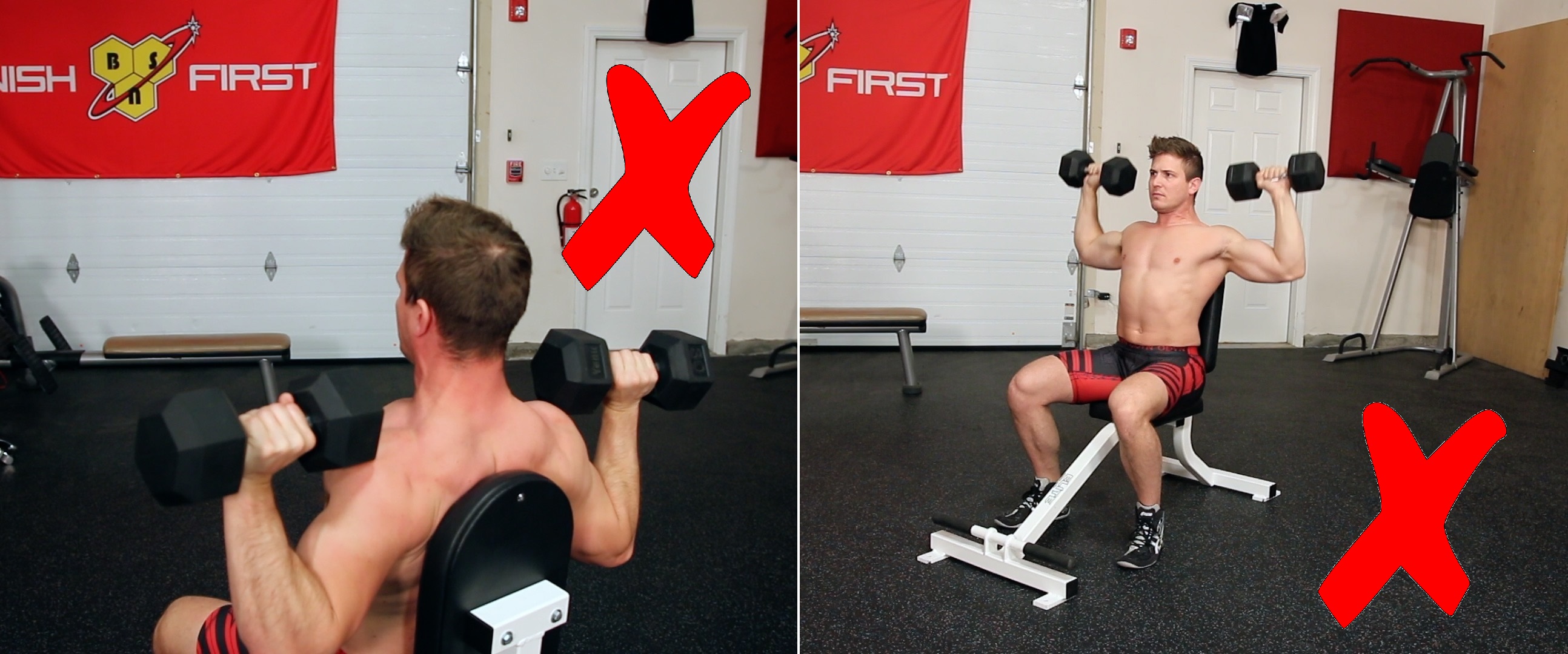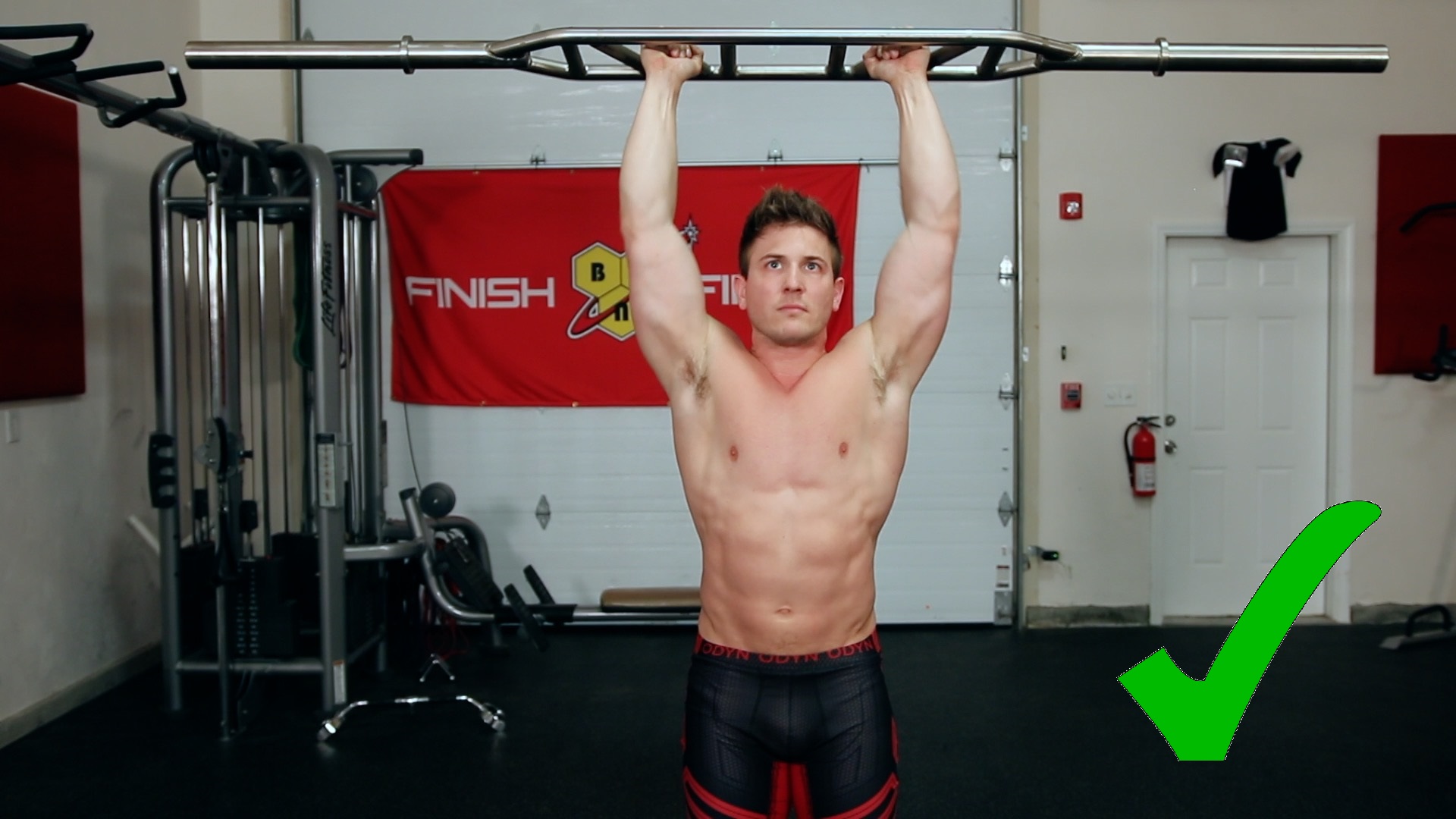2 Reasons Why Your Shoulders Won't Grow!
All Pain - No Gains!
Today we’re going to talk about how to train the shoulders. Or more specifically, how NOT to train them, and this is actually something you see very often in the gym.
Whether seated or standing, using dumbbells or a barbell, everyone has their elbows flared out to the max. It’s usually the same people that flare their elbows out, that also proclaim that stopping at 90 degrees keeps tension on the shoulders. In reality, the people who are stopping at 90 degrees do so because their form is wrong, and when they go below 90 degrees their shoulders start to hurt. And they should! The form is WRONG! So no more excuses – it’s time to drop the ego, lower the weight, and we’re going to discuss how you can make MORE GAINS with proper form.
How did it come to this? How did we find ourselves shoulder pressing so wrong? It’s because when you’re new to training, you’ll actually feel stronger pressing with flared elbows. The correct way to press is with your elbows turned in toward your torso, but when you do this you have to flex your core much harder, because the center of gravity has now moved forward a bit. Also, if you’re new to lifting, your triceps are generally much weaker, and don’t have a lot of experience working in tandem with your shoulders to perform an overhead press. But why is pressing this way superior? It’s for a couple of reasons.
Reason #1
Pressing with your shoulders in front of your body places your shoulder joint in a mechanically advantageous position to press more weight, as we just discussed, with more tricep engagement.

When you press with your elbows flared out, this places your shoulders in an extremely externally rotated position, which will cause friction in the shoulder joint and lead to pain or an injury over time. That’s why it’s also not advised to press or pull behind the neck.

Reason #2
Pressing with your elbows in front of your body engages your triceps to the max, helping you to lift HEAVIER weights, just like with the bench press. We always talk about tucking the elbows in toward the torso to disengage the shoulders and activate the triceps more. That way you can bench more weight. So the same rule applies here with a shoulder press.

Remember that the triceps main function is elbow extension, and the wider you go, the less range of motion (ROM) you have when pressing overhead, which is usually why ego lifters press this way. Less ROM means you can move more weight.

But if your goal is MUSCLE GAIN, then your focus should be VOLUME, and maximizing the STRETCH AND FLEX of every single repetition. And you will be able to get a much DEEPER STRETCH on the shoulders with ZERO PAIN if your elbows are tucked in towards your torso. This is because you are attacking the delts without overstraining the shoulder joint.

Conclusion
Keep in mind that these tips also apply to the barbell press. If you have hit a plateau, try adjusting your form so that your elbows stay under your wrists as you press overhead, to engage the triceps as much as possible, and to really feel that deep stretch in your shoulders at the bottom of the movement. Also, if your gym happens to have a Safety/Swiss Bar available, maybe try using that because it basically allows you to use a barbell, but press overhead like a dumbbell because of the neutral grips on the bar.








